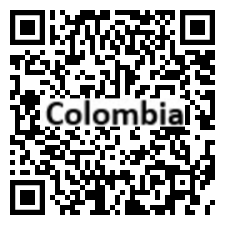Country Summary




Introduction
Background
Colombia was one of the three countries that emerged after the dissolution of Gran Colombia in 1830 (the others are Ecuador and Venezuela). Colombia maintains relatively strong democratic institutions characterized by peaceful, transparent elections and the protection of civil liberties.
Geography
Area
total: 1,138,910 sq km
land: 1,038,700 sq km
water: 100,210 sq km
Climate
tropical along coast and eastern plains; cooler in highlands
Natural resources
petroleum, natural gas, coal, iron ore, nickel, gold, copper, emeralds, hydropower
People and Society
Population
49,059,221 (2022 est.)
Ethnic groups
Mestizo and White 87.6%, Afro-Colombian (includes Mulatto, Raizal, and Palenquero) 6.8%, Amerindian 4.3%, unspecified 1.4% (2018 est.)
Languages
Spanish (official) and 65 Amerindian languages
Religions
Christian 92.3% (predominantly Roman Catholic), other 1%, unspecified 6.7% (2020 est.)
Population growth rate
0.59% (2022 est.)
Government
Government type
presidential republic
Capital
name: Bogota
Executive branch
chief of state: President Gustavo Francisco PETRO Urrego (since 7 August 2022); Vice President Francia Elena MARQUEZ Mina (since 7 August 2022); the president is both chief of state and head of government
head of government: President Gustavo Francisco PETRO Urrego (since 7 August 2022); Vice President Francia Elena MARQUEZ Mina (since 7 August 2022)
Legislative branch
description: bicameral Congress or Congreso consists of:
Senate or Senado (108 seats; 100 members elected in a single nationwide constituency by party-list proportional representation vote, 2 members elected in a special nationwide constituency for indigenous communities, 5 members of the Commons political party, formerly the People's Alternative Revolutionary Force (FARC), for 2 legislative terms only: 2018-2022 and 2022-2026 as per the 2016 peace accord, and 1 seat reserved for the runner-up presidential candidate in the recent election; all members serve 4-year terms)
Chamber of Representatives or Camara de Representantes (188 seats; 162 members elected in multi-seat constituencies by party-list proportional representation vote, 2 members elected in a special nationwide constituency for Afro-Colombians, 1 member elected by Colombians residing abroad, 1 member elected in a special nationwide constituency for the indigenous communities, 5 members of the Commons political party for two legislative terms only: 2018-2022 and 2022-2026 as per the 2016 peace accord, 16 seats for rural conflict victims for two legislative terms only: 2022-2026 and 2026-2030, and 1 seat reserved for the runner-up vice presidential candidate in the recent election; all members serve 4-year terms)
Economy
Economic overview
prior to COVID-19, one of the most consistent growth economies; declining poverty; large stimulus package has mitigated economic fallout, but delayed key infrastructure investments; successful inflation management; sound flexible exchange rate regime; domestic economy suffers from lack of trade integration and infrastructure
Real GDP (purchasing power parity)
$683.94 billion (2020 est.)
Real GDP per capita
$13,400 (2020 est.)
Agricultural products
sugar cane, milk, oil palm fruit, potatoes, rice, bananas, cassava leaves, plantains, poultry, maize
Industries
textiles, food processing, oil, clothing and footwear, beverages, chemicals, cement; gold, coal, emeralds
Exports
$39.14 billion (2020 est.)
Exports - partners
United States 31%, China 11%, Panama 6%, Ecuador 5% (2019)
Exports - commodities
crude petroleum, coal, refined petroleum, coffee, gold (2019)
Imports
$51.56 billion (2020 est.)
Imports - partners
United States 27%, China 20%, Mexico 7%, Brazil 6% (2019)
Imports - commodities
refined petroleum, cars, broadcasting equipment, packaged medicines, corn (2019)
Exchange rates
Colombian pesos (COP) per US dollar -
Page last updated: Wednesday, November 16, 2022
